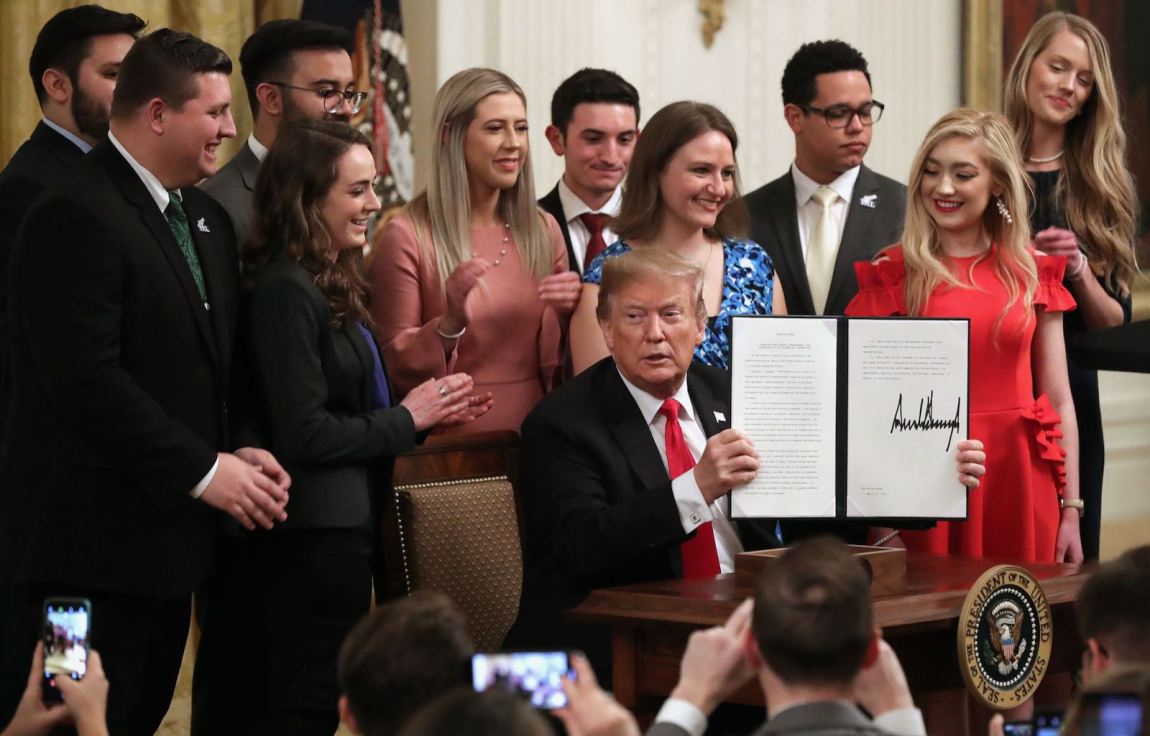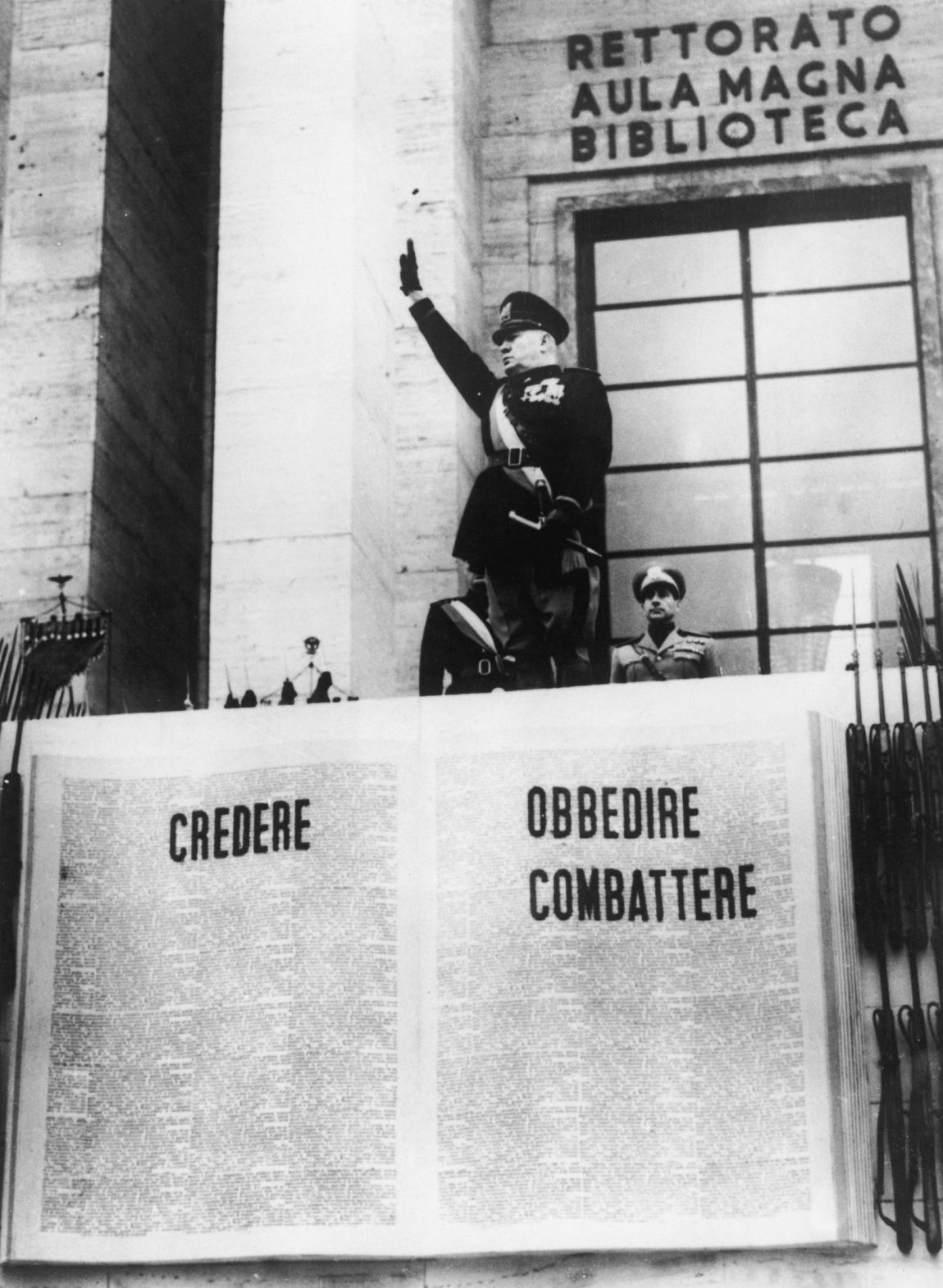First came the declaration of war on The New York Times’s 1619 Project, which examines the way slavery has shaped American society and national identity. In September, Trump tweeted a threat to defund California schools if they included the 1619 Project in their curricula. Then came measures to ban antiracist trainings for government employees. A September 22 executive order made official the prohibition of workplace instruction on sex and racial discrimination, both deemed “divisive concepts.” Over the summer, as antiracist pedagogy gained currency among Americans following the Black Lives Matter protests sparked by George Floyd’s death at the hands of police, an alarmed Trump administration sought to limit its circulation in multiple ways.
A White House history conference held at the National Archives on September 17 unveiled yet another prong of the strategy. A new 1776 Commission, tasked with developing a “pro-American curriculum” of “patriotic education,” would free the teaching of history from antiracism and its “twisted web of lies.”
The invocation of patriotism connected the crusade against antiracism to another Trump talking-point: the need to reduce the influence of the political left on American education. As the argument goes, the same destructive politics that produces “violence and anarchy” on the streets is finding a foothold in American classrooms. “Too many Universities and School Systems are about Radical Left Indoctrination, not Education,” the president had tweeted in July.
“We are here today to declare that we will never submit to tyranny,” the president declared at the September history conference, depicting leftist university professors as agents of larger designs to destroy family, community, and national unity. The Education Department guidelines announced that month raise the possibility of defunding universities whose faculty members disparage “any race or ethnicity,” a measure that might sound reasonable but is intended to silence any discussion of white violence and abuse of power in America, past or present.
Trump’s actions reflect the American right’s opposition to rethinking the legacies of slavery in US history, but they also mirror a long, international tradition of how illiberal and authoritarian rule has managed universities. From the fascist years in Europe, nearly a century ago, to our own times, right-wing leaders have accused universities of being incubators of left-wing ideologies and sought to mold them in the image of their own propaganda, policy, and policing aims. Far from being “ivory towers” closed off from society, higher education institutions have often been on the front lines in times when democracy was under attack.
For a century, the far right has depicted liberal democracy as a force of unfreedom that censors its enemies on and off of campus. Long before Trump posed as the enemy of tyranny, racists made political capital by proclaiming themselves victimized by those who sought to restrict their hate speech. In the mid-1920s, as he sought to rebuild his following after his failed 1923 putsch in Bavaria, Adolf Hitler became the symbol of muzzled right-wing truth when several German states banned him from speaking. In 1927, the National Socialist Party circulated posters of him with his mouth taped over, inviting people to protest his silencing by the establishment.
Given the virulence the Nazis showed in silencing their critics in and out of the academy after Hitler took power in 1933, it is remarkable that this talking-point has retained traction for the right. It has done so thanks, largely, to the military juntas of the cold war era, which gave new life to fascism’s battles against the left.
In the Chile of military dictator Augusto Pinochet (1973–1990), it was the goal of forcing “a profound change in the mentality of the country,” as one official put it, that placed higher education in the crosshairs of the government. Three weeks after the coup that, on September 11, 1973, overthrew the socialist President Salvador Allende, an Air Force general named César Ruiz Danyau parachuted onto the campus of the University of Chile in Santiago to begin his new job as rector. By then, a campaign to purge higher education of leftist lies in the service of truth and freedom was under way. By November, thousands of faculty, staff, and students had been expelled—in the law school alone, forty-four out of three hundred and sixty professors were forced out; by 1975, that tally of expulsions numbered twenty-four thousand in total.
Strongmen disappear people, and they also disappear areas of knowledge that encourage critical thinking or that conflict with their ideologies and social engineering goals. In Hitler’s Germany, art criticism was forbidden. In Pinochet’s Chile, philosophy and sociology departments closed down. The film director Federico Fellini, who started his career during the dictatorship of Benito Mussolini (1925–1943), called such censorship “a system of violence” against “subjects it wants to bury and prevent them, indefinitely, from becoming reality.” In strongman states, where speaking out can bring professional ruin or physical harm to you and your family, self-censorship can be a survival strategy.
Advertisement
The Italian fascist regime provided the template for right-wing authoritarian actions against faculty, staff, and students deemed political enemies. Leftists, liberals, and anyone who spoke out against the government were sent to prison or forced into exile. Since most universities were public, funds could easily be redirected; and because professors and researchers had civil servant status, they could be pressured through bureaucratic means. A 1931 loyalty oath to the king and fascism was the first step (it served loosely as a model for a similar pledge later adopted by Nazi Germany). A 1932 requirement for university faculty to join the fascist party in order to be eligible for jobs or promotions followed, as did pressure to wear the black shirt when taking part in public ceremonies. Many academics learned too late the rule about cooperating with authoritarian states: the moment you agree to comply on one point, the trap is set for you to meet another.
Authoritarians thus depend in part on turning campuses into sites of mistrust and fear. In Pinochet’s Chile, universities became stages for show trials, with faculty “prosecutors” promoting denunciations of “extremist” colleagues, who were, as a result, often imprisoned and tortured. Seen as inherently untrustworthy, foreigners in the higher educational system were frequently jailed and then expelled from the country. Klaus Meschkat, a sociology professor of German origin, was reminded of the Nazis he and his parents had fled when he found himself interned in a concentration camp on a remote island off the coast of Chile.
Universities continue to be the targets of leaders who demonize the left as a means of empowering the right. As authoritarianism takes hold in a society, what happens on campus—from the recruitment of informers to the expulsion of dissidents—often reflects, or even anticipates, broader transformations.
In contrast to yesterday’s fascist putschists, today’s autocrats have mostly come to power through elections and then move to extinguish democratic freedoms slowly, as Hungarian autocrat Viktor Orbán has done in Hungary. Not content with banishing the Central European University in 2018, Orbán went on to ban the teaching of gender studies in other colleges (on the grounds that it is “ideology” and not “science”), a move that paved the way for his measure this year that ended the legal recognition of transgender and intersex people.
During Trump’s time in office, the US government has made similar moves against the rights of transgender people, with its policy of barring them from military service. And its open advocacy on behalf of white Christian identity and heritage, its attacks on civil rights, the mass detention of migrants, and a growing criminalization of dissent place the Trump administration squarely in the tradition of right-wing counter-revolutionary politics.
To be sure, this White House builds on the work of a Republican Party that had already shifted away from mutual tolerance and other values that underlie liberal-democratic models of learning. Well before Trump, Republican state officials had waged war on higher education and the supposed liberal and leftist influence within it. Governor Scott Walker acted against the University of Wisconsin system in 2015 and 2016, cutting funding and weakening protections of tenured faculty against layoffs.
Even during the Obama years, GOP lawmakers were able to force the closure of centers on voter engagement and poverty studies at state universities in North Carolina. The conservative James G. Martin Center for Academic Renewal, based in Raleigh, foreshadowed Trump’s rhetoric in depicting universities as a place of unfreedom, dominated by unpatriotic progressive thinkers. “Where fascism teaches adoration of a mythic past, the diversity delusion teaches that our past was one of unremitting horror and its institutions must be torn down” reads a 2018 blog post on its site.
Yet the vigor of the Trump administration’s attempts to ban and discredit antiracist teachings while defending hate speech on campus goes beyond traditional Republican talking-points, and hews instead to an authoritarian tradition of making right-wing provocateurs appear casualties of liberal censorship. Just weeks after his inauguration, Trump came to the aid of the far-right agitator Milo Yiannopoulos, after the University of California at Berkeley cancelled the latter’s event. As the then-new president tweeted, “If UC Berkeley does not allow free speech and practices violence on innocent people with a different point of view—No FEDERAL FUNDS?”
This was no idle threat. As of March 2019, an executive order he signed for the protection of free speech in colleges has made it easier for hate speech to circulate on campus. For a growing number of students, that is a problem. A new Knight Foundation report found that while 81 percent of college students surveyed support a campus environment open to all opinions, 78 percent feel colleges should have the right to restrict the use of racial slurs, up from 69 percent in 2016.
Advertisement
That is exactly the kind of antiracist consensus that the Trump administration seeks to overrule in the name of normalizing white nationalism. If the president is re-elected next month, we can expect an escalation of government pressure on universities, attempts to gain support for the hostile policing of dissent among faculty staff, and more. Because an informed public is less susceptible to disinformation and propaganda, Trump, like all authoritarians, depends on degrading real knowledge and expertise. A second Trump term would accelerate the debasement of higher education, subordinating independent learning and critical thinking to the “adoration of a mythic past.”




